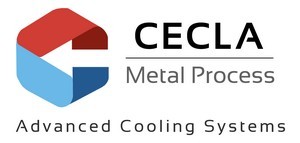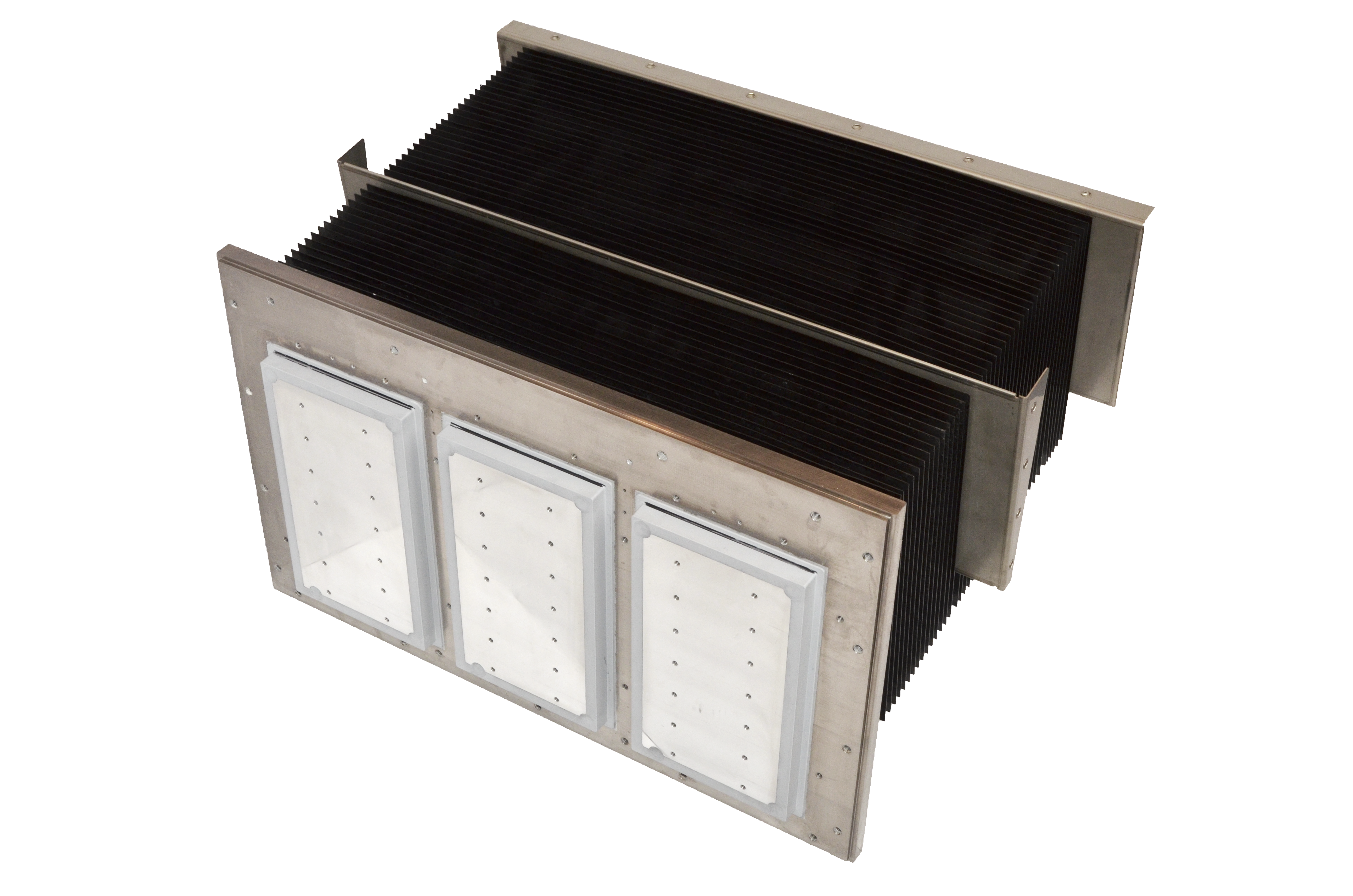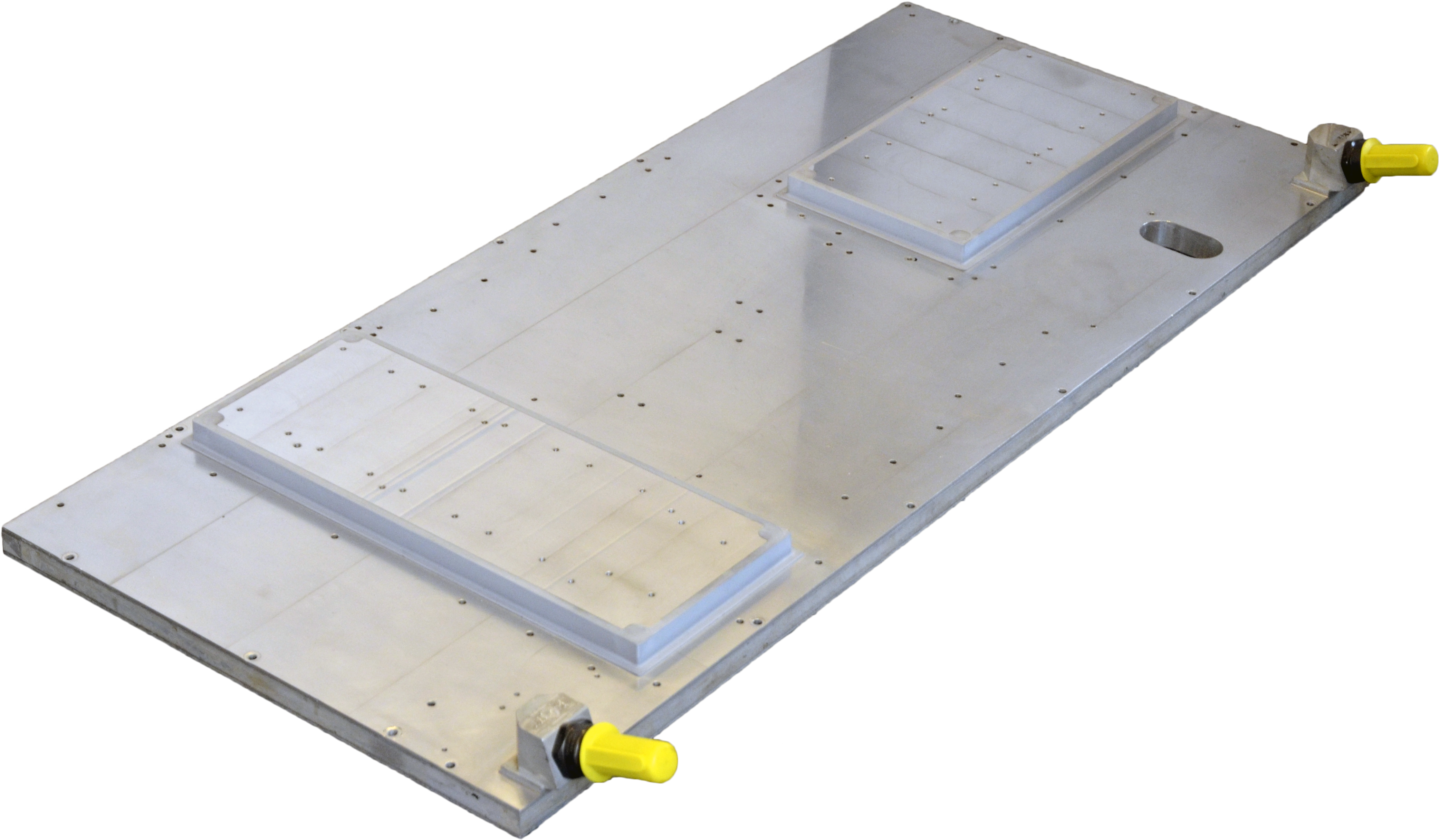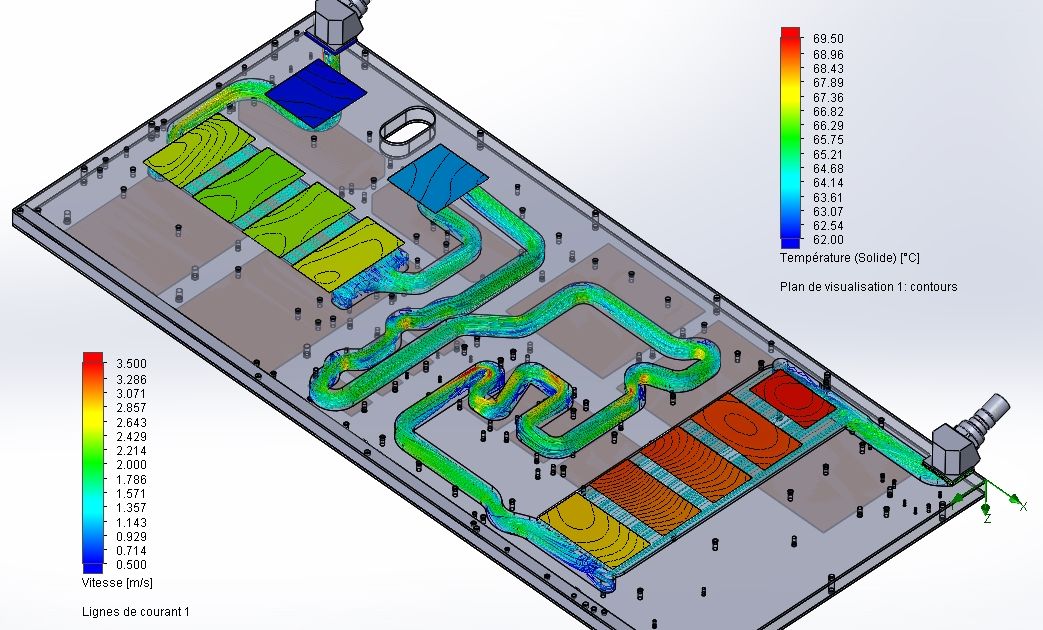Air coolers
Air coolers are well known passive solutions for making a thermal exchange between a hot surface (contact to the component) and a fluid, generally the air. This solutions is often the cheapest way to cool a component, it has however limited performance.
General principle
Dissipators used for low current electronic and power electronic are generally made with aluminium. Copper can be used hardly ever, in order to use its excellent thermal conductivity.
Electronic components are generally set on the surface of the heat sink by screws or clamps. A thermal filler base on thermal grease or gap pad makes the contact. CECLA METAL PROCESS pays attention continuously to the quality of the contact surface of its coolers (Standard : Ra 0.8 - Planarity 0.05/100mm).
Base plate of the component transfers heat to the heat sink. Thanks to its fins, the heat sink is making a thermal exchange with the air in convection.
Two types of convection can be used
- Natural convection: temperature gradient in the air made by the fins, leads to the motion of the fluid. Cold particules of air are sucked up by the down area of the heat sink. Hot particules of air are extracted from the top of the heat sink. The result is a passive thermal exchange between the heat sink and the air.
Advised fins step : 7mm to 10mm
- Forced convection: air is moved by an external action of a fan. The forces flow of the fluid in the fins is making a thermal exchange. Efficiency of this exchange is increasing with the speed of air.
- Advised fins step : 2 to 4mm
Extruded heat sinks
Most of the cooling solutions can be achieved by extruded heat sinks. After beeing heated, aluminium is pushed inside a custom die corresponding to the shape we want to extrude.
Extruded bars are then cutted, welded and milled custom to your need.
Extrusions is an economical process adapted to medium and big series starting from 100Kg to several tons of aluminium
Small fins step can not generally be achieved by extrusion.
Bounded fins heat sink
On these kind of heat sinks, fins are set inside the base plate. This process allows small steps of fins, which makes it suitable for forced convection applications.
Brazed heat sink
Aluminium brazing allowed to build heat sink by a local fusion of a brazing material. This process is able to achieve small step of fins, which makes it suitable for forced convection applications.
Aluminium brazed heat sinks are generally more efficient than bounded fins heat sink, because brazing makes a continuous contact between fins and base plate.
Heat sink with heat pipes (HSHP)
When the heat fluw is too important or it is necessary to optimize the efficiency of the cooler, CECLA METAL PROCESS can propose its technology HSHP.
Starting from your component topology, we integrate heat pipes inside the base plate of the heat sink in order to increase its conductivity.
High thermal conductivity of heat pipes, leads to spread the heat flux all over the base plate. Thus all the fins are working and the heat sink efficiency is optimized.
With an equivalent configuration, we get:
- Decreasing of weight
- Smaller dimensions
- Increasing of the maximum power
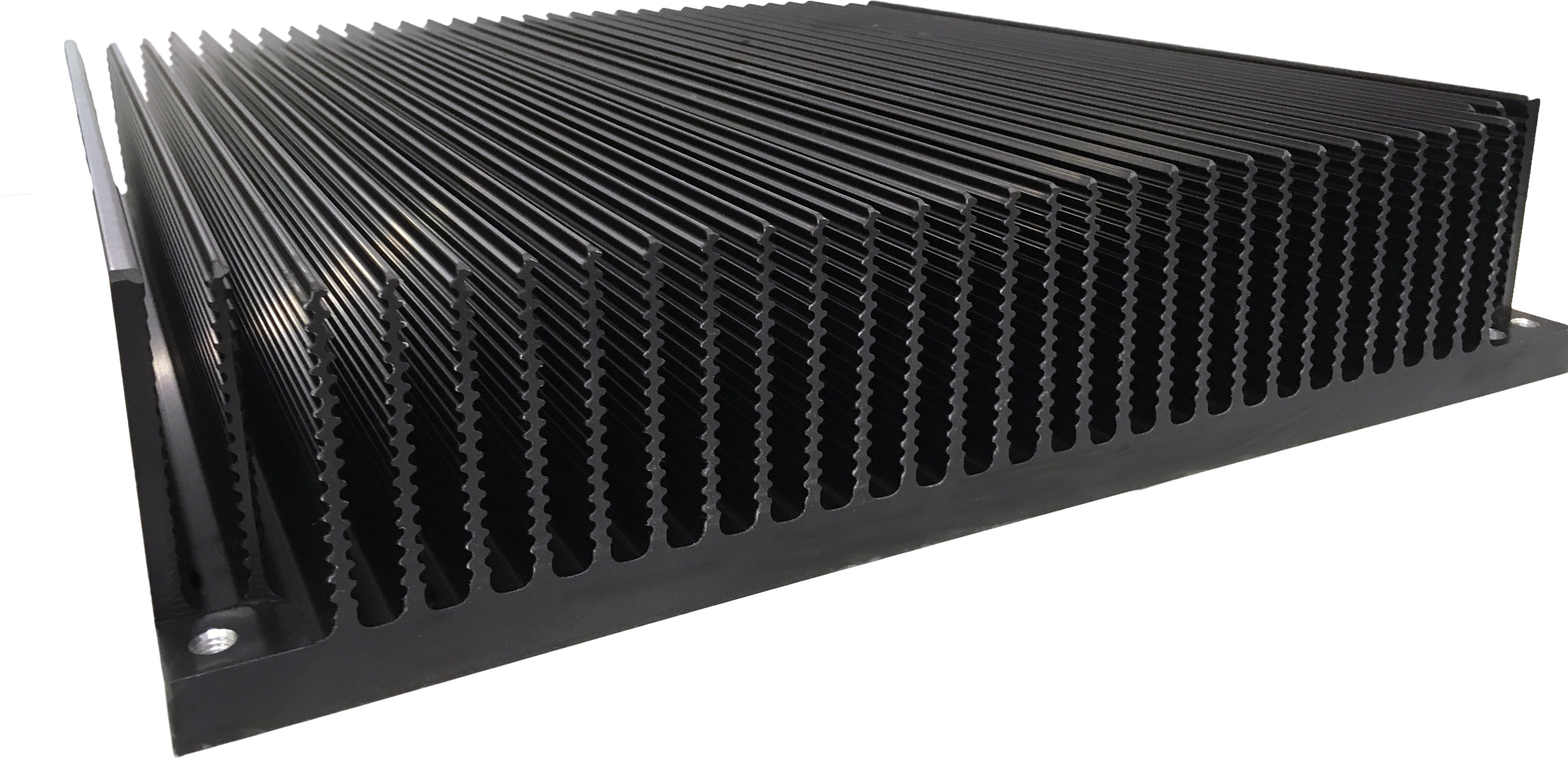 |
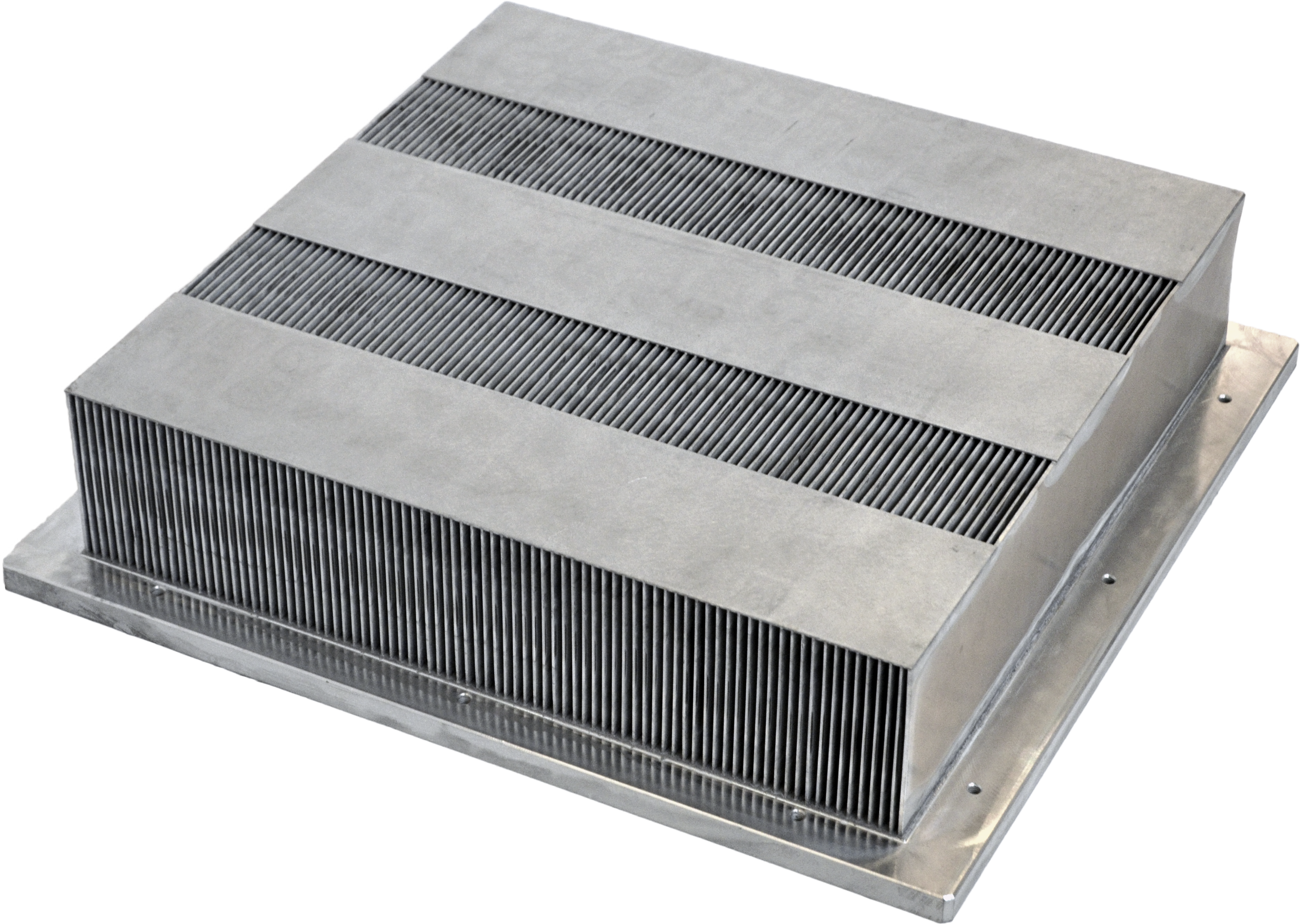 |
 |
Extruded Heat sink |
Brazed heat sink |
HSHP (Heat Sink with Heat Pipes) |
